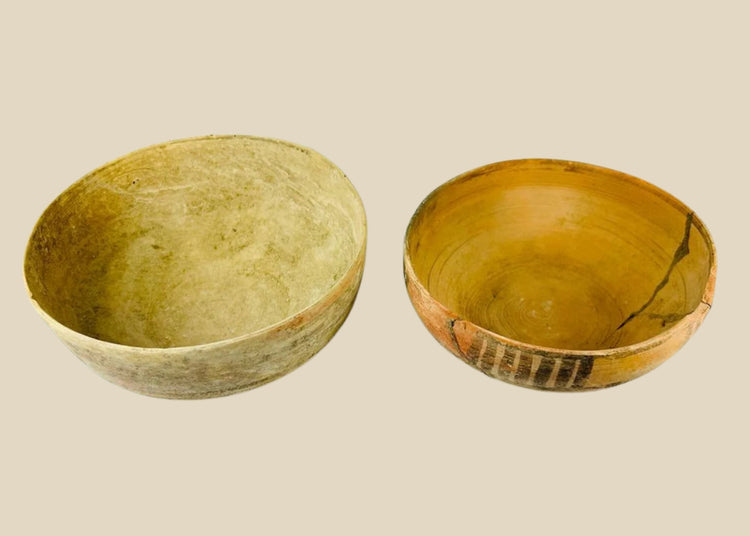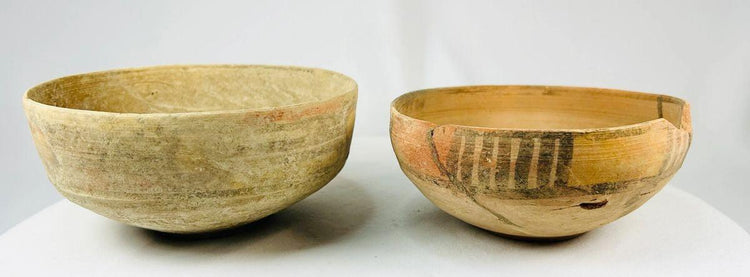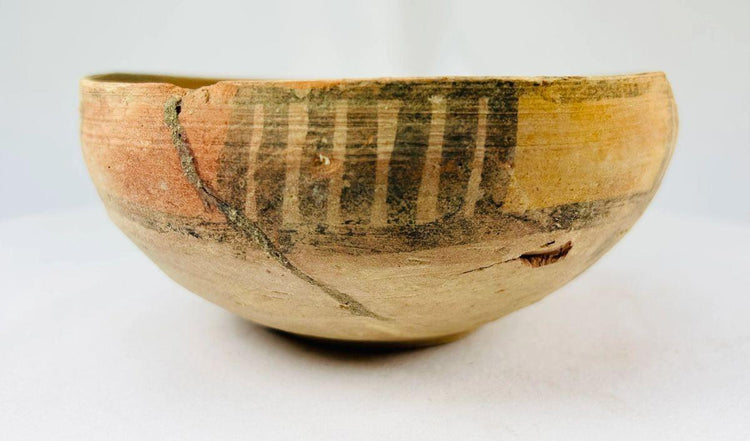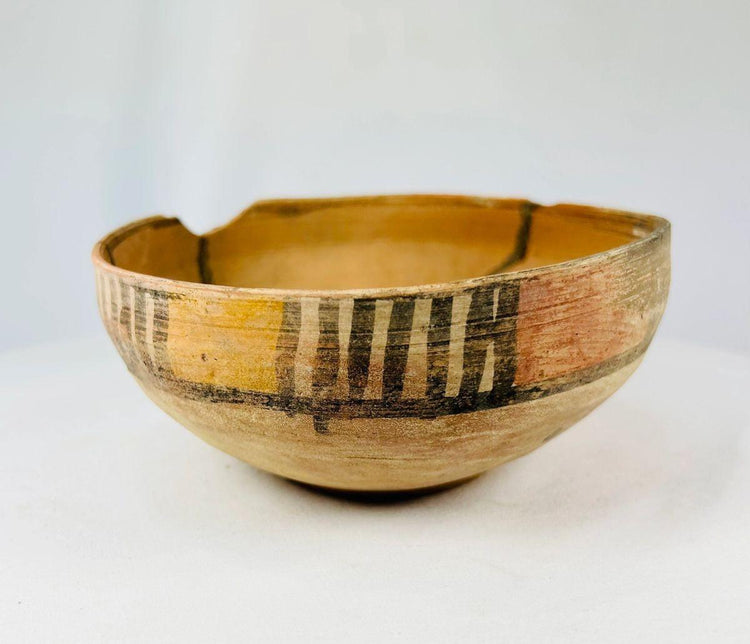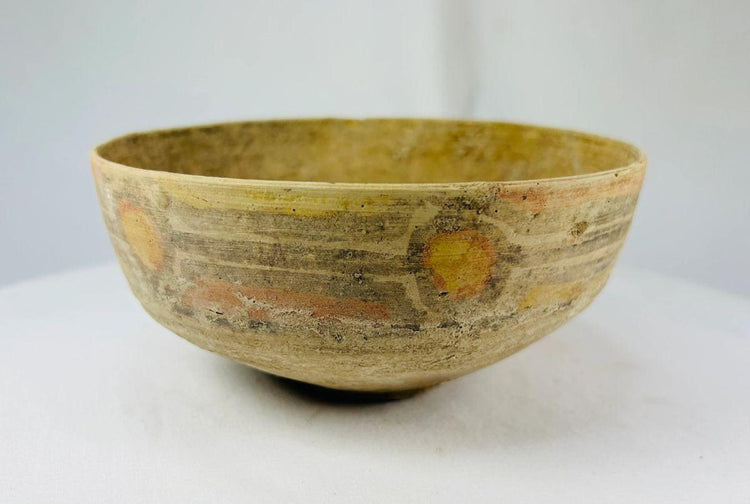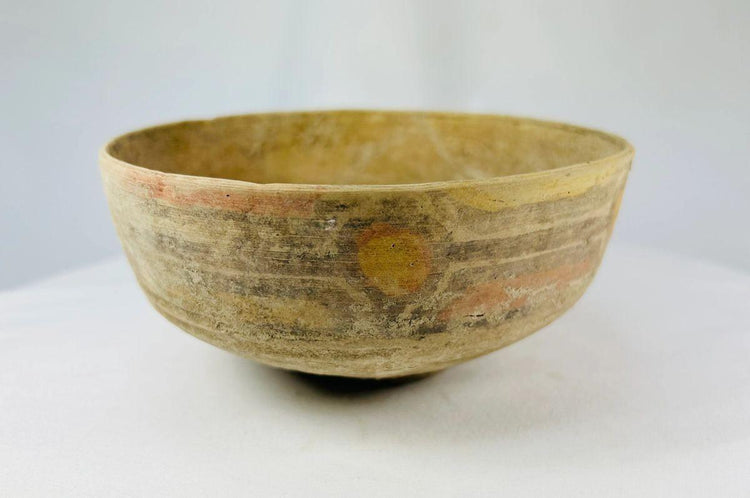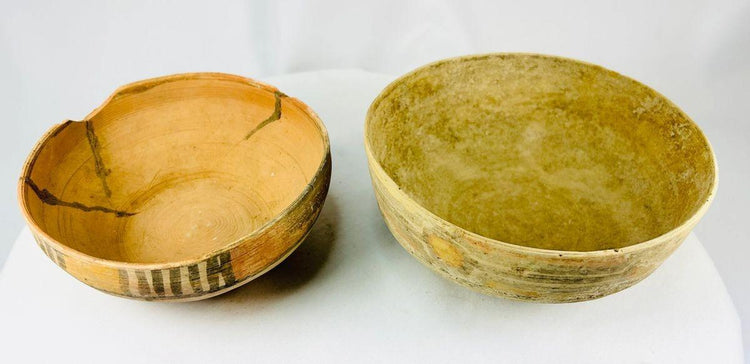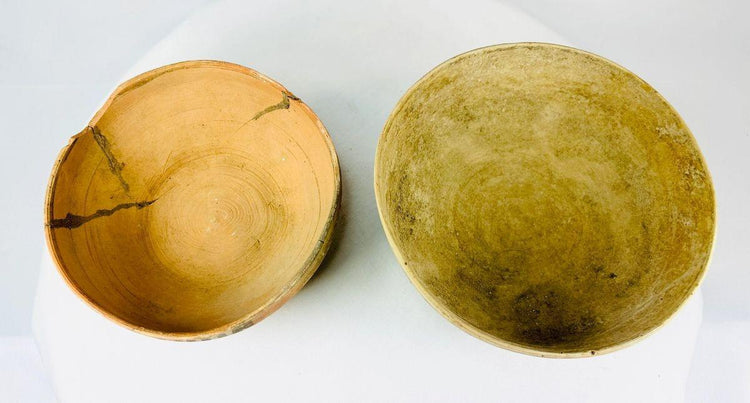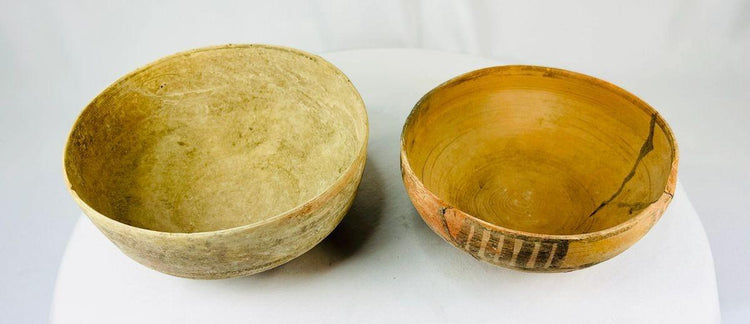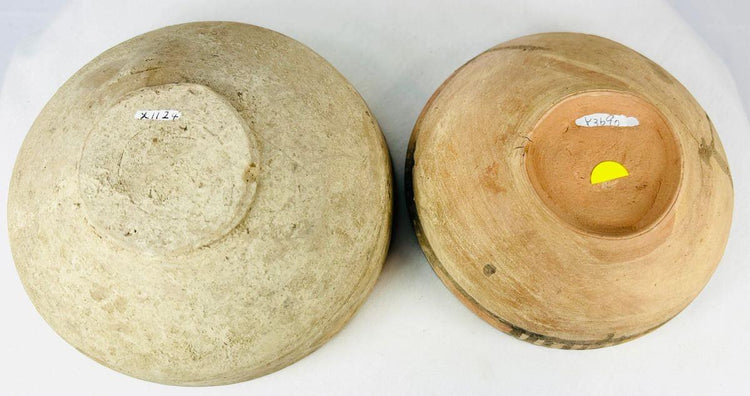Indus Valley Civilization Terracotta Bowls | Painted Motifs & Buff Slip | Late Harappan | Circa 1900–1300 BCE
Description
More
Less
Historical Context & Origin
Region: Northern India / Pakistan (Indus Valley Civilization)
Material: Terracotta with mineral-based painted decoration
Period: Circa 1900–1300 BCE (Late Harappan Phase)
Description
This is a pair of ancient hand-formed ceramic bowls attributed to the Late Harappan phase of the Indus Valley Civilization. The vessels are representative of the cultural transition following the mature urban phase, featuring distinctive painted motifs and traditional utilitarian forms.
-
Bowl A (Painted Motif): Features a well-preserved band of black vertical strokes over a buff-colored slip, encircling the rim. This vessel shows signs of ancient use and repair, with visible linear cracks professionally stabilized in antiquity.
-
Bowl B (Circular Dots): More subtly decorated, this bowl exhibits faded red and ochre circular motifs around the body. It retains an original earthen patina and shows evidence of prolonged burial and mineral contact.
Features
- Hand-thrown clay construction
- Geometric and symbolic painted motifs
- Strong archaeological character with surface deposits and age-related wear
- Remnants of original excavation inventory label on base
Cultural Significance
Such vessels were used in both domestic and ceremonial contexts during the declining phase of the Indus Valley Civilization. Their painted designs may represent symbolic or ritual meaning, echoing a cultural tradition of abstraction, practicality, and continuity in spiritual symbolism.
Condition
Both vessels show minor losses, rim chipping, and surface wear consistent with age. No modern restorations observed. Stable and display-ready.
Dimensions (approximate)
Diameter: 6 in
Height: 3 in
Age
Approximately 3,900–3,200 years old
Learn More
Unlock the Secrets of the Indus Valley Civilization
Discover More Remarkable Indus Valley Artifacts in our Collection
Description
Historical Context & Origin
Region: Northern India / Pakistan (Indus Valley Civilization)
Material: Terracotta with mineral-based painted decoration
Period: Circa 1900–1300 BCE (Late Harappan Phase)
Description
This is a pair of ancient hand-formed ceramic bowls attributed to the Late Harappan phase of the Indus Valley Civilization. The vessels are representative of the cultural transition following the mature urban phase, featuring distinctive painted motifs and traditional utilitarian forms.
-
Bowl A (Painted Motif): Features a well-preserved band of black vertical strokes over a buff-colored slip, encircling the rim. This vessel shows signs of ancient use and repair, with visible linear cracks professionally stabilized in antiquity.
-
Bowl B (Circular Dots): More subtly decorated, this bowl exhibits faded red and ochre circular motifs around the body. It retains an original earthen patina and shows evidence of prolonged burial and mineral contact.
Features
- Hand-thrown clay construction
- Geometric and symbolic painted motifs
- Strong archaeological character with surface deposits and age-related wear
- Remnants of original excavation inventory label on base
Cultural Significance
Such vessels were used in both domestic and ceremonial contexts during the declining phase of the Indus Valley Civilization. Their painted designs may represent symbolic or ritual meaning, echoing a cultural tradition of abstraction, practicality, and continuity in spiritual symbolism.
Condition
Both vessels show minor losses, rim chipping, and surface wear consistent with age. No modern restorations observed. Stable and display-ready.
Dimensions (approximate)
Diameter: 6 in
Height: 3 in
Age
Approximately 3,900–3,200 years old
Learn More
Unlock the Secrets of the Indus Valley Civilization
Discover More Remarkable Indus Valley Artifacts in our Collection
You May Also Like


























